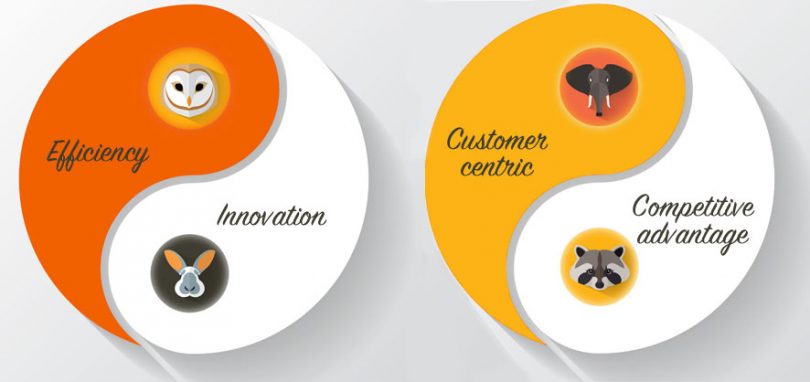Insurance is ideally suited for blockchain, so the list of applications or use cases is a long one. It’s comforting to measure use case benefits in terms of the familiar ROI, but should that be the only measure?
Is that too narrow and short term? To demonstrate, a few applications have been grouped by characteristics that fit with animals: elephants, foxes, owls, and rabbits.
The elephant: wise, sociable and nurturing. Customer focused
“The challenge the insurance industry has is about how they think about the customer. It’s no secret. They’ve been a low interest, low involvement category.” says Donna Peeples who’s run customer experience for several well-known insurance brands. The problem the industry has it that startups will exploit this neglect, perhaps slowly at first.
The USA Today recently ran an article about unclaimed life insurance policies to the tune of $7.2 billion. The uncomfortable aspect was that the industry used the US death registry as a signal to stop paying out income to people who had bought annuities and died, but the same companies did not use it to determine when to pay out on life insurance policies. For that they waited for a claim, assuming the loved ones are aware of the policy and have the details. That was until the state governments stepped in.
‘Notification of death’ is a potential blockchain application. The blockchain stores the life insurance policy and insurers name, and connects to the death registries around the world. When someone dies, the policy details are retrieved identifying the beneficiaries, and payment is automatically made, reducing the stress on the loved ones. There’s an argument that this is simple automation and doesn’t need a blockchain.
This type of application shares the friendly nature of the elephant. It might not have a significant impact on the bottom line, but in the current business climate, there’s a lot to gain by demonstrating a company’s social contribution.
There’s a chance these use cases could end up at the bottom of that long list.
The fox: responsive, agile and smart. Competitive advantage
Elsewhere on Ledger Insights, we covered the trucker’s need to demonstrate insurance before taking on a load, where the blockchain cost savings could be huge, and any insurer who offers this will be at a competitive advantage.
The real blockchain benefit will be when many insurers share this information on a single blockchain, and then the driver only needs to provide his ID so the shipper can check the blockchain.
The owl: magic, mystery, and wisdom. Process automation
Most players in the insurance industry acknowledge that the manual nature of insurance processes is ripe for automation. Blockchains are a practical tool.
There are countless automation applications.
- the entire process from policy inception at broker level through to insurer and reinsurer can be shared
- the claims process, from notification of first loss to sharing with providers who do repairs
- subrogation: where the insurer pays a claim but then recovers the money from the other side, often another insurer
The rabbit: sexy, reproduce quickly and creative: Innovation
This group is not entirely separate from the owls because the increased automation renders micro insurance viable. Parametric insurance and p2p insurance will be discussed separately in articles covering startups.
The takeaway is that incumbents may want to resist the urge to focus on owls and foxes.






